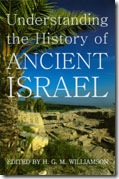This conference has already started (Jan 13-16), but the program (pdf) may be of interest to those not in Jerusalem. The full title of the conference is “Jewish Views of the After Life and Burial Practices in Second Temple Judaism: Evaluating the Talpiot Tomb in Context.” This is the Third Princeton Symposium on Judaism and Christian Origins, and it looks like James Charlesworth will likely edit a book from the proceedings, similar to his Jesus and Archaeology, which came out of a conference in Jerusalem in 2000. Presenters or panel participants include Kloner, Vermes, Magnes, Meyers, Gibson, Lemaire, Zias, Tabor, Barkay, Netzer, and many others.
HT: Yehuda News
